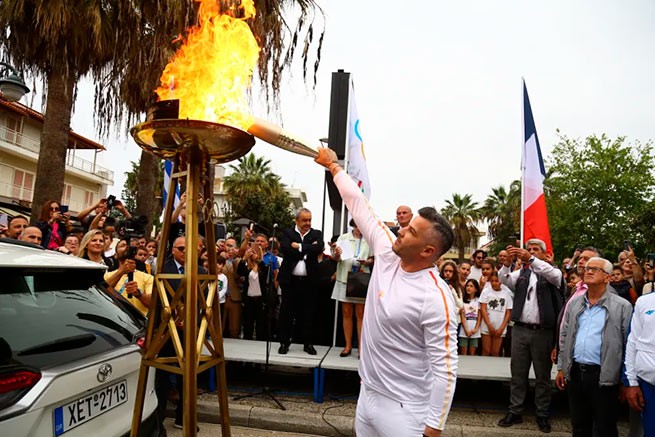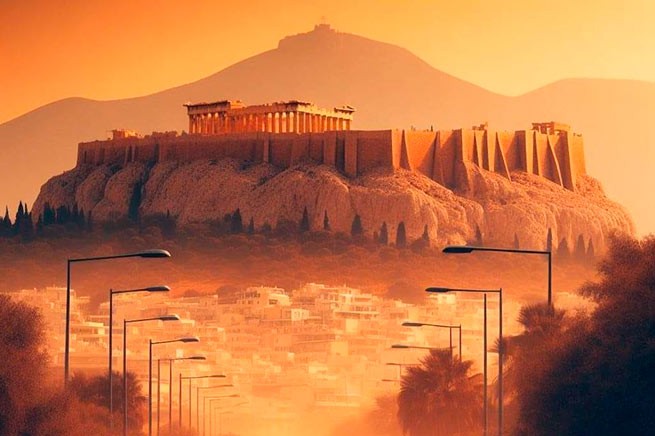When asked who Pythagoras is, most people will probably answer that this is the great ancient Greek mathematician, the creator of the famous theorem on isosceles triangles …
And yet this extraordinary person was also an outstanding thinker and occult adept, so that his scientific activity is directly related to spiritual knowledge.
Pythagoras was born into the family of a wealthy Samos jeweler. Even before his birth, he was dedicated by his parents to the sun god Apollo. When he was one year old, his mother Parthenisa, on the advice of the Delphic priests, took the child to the temple of Adonai, located in the Lebanese Valley. There the great priest gave his blessing to the baby. The boy’s parents encouraged his early scientific aptitude. He talked freely with the Samos priests, studied with the famous teachers of Samos and Demand, entered into disputes in Miletus with Thales and Anaximander themselves.
However, the knowledge received from scientists and sages did not satisfy his spiritual need. Among their conflicting teachings, he longed to find a living connection, synthesis, unity of the Great Whole, tried to see the goal, to find the path leading to the light of truth, to the center of life. Pythagoras believed that the whole universe is based on number and harmony. In the synthesis of three worlds (Earth, God and Man), mutually supporting and defining each other, lies the secret of the Cosmos. The law of triplicity, which governs the structure of beings, and septenary, which underlies their evolution, is the key to understanding the Universe.
In order to prove with his mind what his mighty intuition in the field of the absolute has seized, Pythagoras goes to the priests of Memphis in Egypt. His dedication lasted 22 years under the guidance of the great priest Sophiz. Egyptian priests opened all the treasures of their occult knowledge to their talented student. Having received the initiation of Osiris, Pythagoras wanted to return to Greece, but the sudden outbreak of war brought the captive priests to Babylon. There at that time there were three different directions of spiritual life, which had an esoteric basis – the ancient priests of Chaldea, the remnants of a tribe of Persian magicians and a select few from among the captive Jews.
For 12 years, Pythagoras did not voluntarily stay in Babylon. Having hardly received permission to leave from the Persian king, after a 34-year absence he returned to his native Samos. By that time, everyone, except for the aged mother, was sure of his death. Soon, together with his mother, he left Samos and arrived in the sacred city of Delphi. The teachings of the Delphic priests, as in Egypt, were based on art and science.
Art consisted of penetrating into the distant past and future through clairvoyance or prophetic ecstasy with the help of the Pythian soothsayers. Science was a method of calculating the future based on the laws of world evolution. Art and science controlled each other. Pythagoras appeared in Delphi after visiting all the temples of Greece. He visited the sanctuary of Zeus, was present at the Olympic Games, stood at the head of the mysteries of Eleusis … Everywhere he was greeted as having some kind of secret power unknown to mere mortals.
He directed his feet to Delphi not so much for the worship of Apollo as for the enlightenment of his priests. There he saw the young priestess Theoclia, who immediately felt the presence of the Initiate. The scientist remained in Delphi for a whole year and only after the priests were initiated into all the secrets of occult teachings, and Theoclia was ready for her mission, went to Croton, a flourishing city in southern Italy, a former colony of Greece.
There he was going to apply esoteric sciences in the education of youth and the life of the state. He called the young men to the temple of Apollo, and the girls to the temple of Juno. The Institute of the Pythagoreans was also created in Croton, which was both an academy of sciences, and a college of ethical education, and an exemplary community. Under the guidance of the great Initiate, the students of this institution achieved harmony of soul and intellect with the Universe.
A small community of a select few was housed in a white building perched on a hill under the shade of capers and olives. Young people who wanted to join the community had to go through a series of tests. Not everyone could endure fasting, loneliness and ridicule, therefore many, without passing the exam for self-control, left the school of Pythagoras.
Pythagoras lived in Croton for 30 years. At the age of 60, he married the young beauty Feano. Their children – two sons and a daughter – followed in the footsteps of their father. Pythagoras managed to put rulers based on the highest knowledge at the head of the state, forming the Council of Three Hundred (something like a scientific, political and religious Order, the head of which was Pythagoras himself). The Pythagorean Order has existed for 50 years.






More Stories
Olympic torch relay: traffic restrictions in Athens and Attica on Friday
Ancient papyrus reveals Plato's burial site
Metropolitan Chrysostom: "The Church will never recognize same-sex marriage – the issue is not closed"